News
Code of conduct comes into force in Himachal as EC announces 9 Nov as polling date
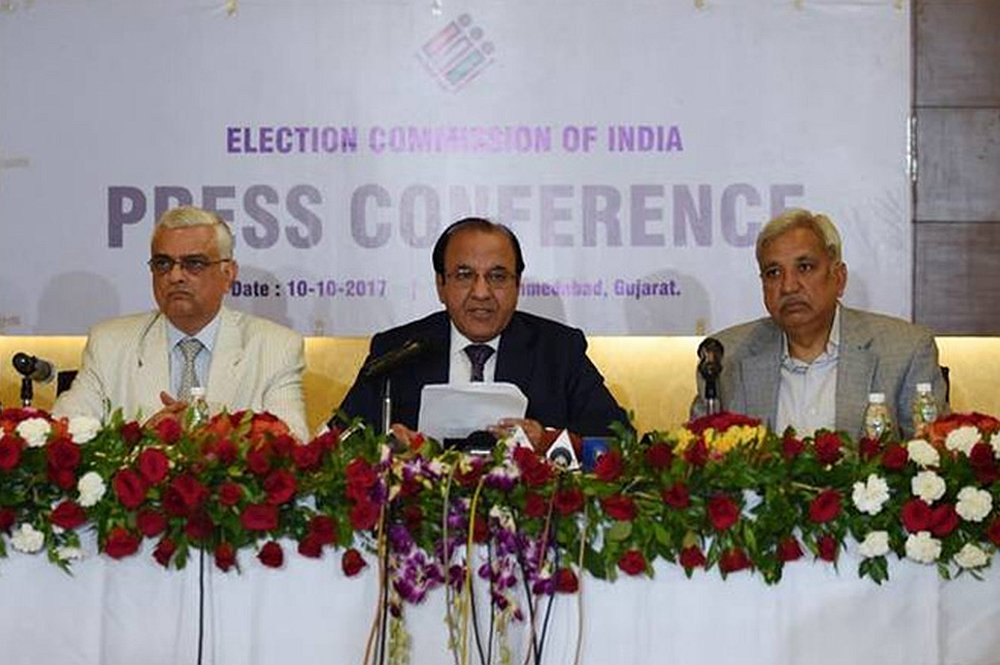
On the Balloting Unit, below the name of the last candidate, there will now be a button for NOTA option so that electors who do not want to vote for any of the candidates can exercise their option by pressing the button against NOTA.
New Delhi: The Election Commission of India has finally announced the date for the Himachal Pradesh Legislative Assembly elections. The Hill state will go for polls on November 9, 2017. With this announcement, the model code of conduct has also come into force.
However, the Commission did not declare the polling date for the state of Gujrat.
Himachal has total 68 assembly constituencies. Out if total, 17 seats are reserved for the Scheduled Castes and 3 for the Scheduled Tribes.
This election, Himachal has 7479 polling stations as compared to 7252 in 2012 – an increase of 3.13 percent.
As per the draft rolls, the total numbers of electors in the states is 905677 (49.05 Lac).
The Commission has directed the State election machinery to ensure time-bound completion of Special Summary Revision of Electoral Rolls.
As a special initiative, Second Special Summary Revision 2017 was organized in Himachal from July 1 to September 15, 2017, during which 1.25 Lac voters name were added to the electoral rolls and 47,214 were deleted through form-7.
Through a special drive to enroll left out voters organized from 16th -30th September 2017, total 74885 new voters were added. Out of this total, 20437 new voters belong to 18-19 year age group.
Photo percentage in Photo Electoral Rolls of this State is 100%.
Secrecy of Voting- Increase in Height of Standardized Voting Compartment
In order to maintain the secrecy of the vote, the Commission has issued revised instructions to increase the height of the Voting Compartments to 30 inches.
Model Code of Conduct
All the provisions of the Model Code will apply to the whole of Himachal Pradesh and will be applicable to all candidates, political parties and, the State Government of Himachal Pradesh. The Model Code of Conduct will also be applicable to the Union Government insofar as announcements/policy decisions pertaining to/for this State is concerned.
The Commission has also issued instructions for swift, effective and stringent action for enforcement of Model Code of Conduct during the first 72 hours of the announcement of the election schedule and also for maintaining extra vigilance and strict enforcement action in the Last 72 hours prior to the close of polls.
All critical events will be video-graphed. District Election Officers will arrange a sufficient number of video and digital cameras and camera teams for the purpose.
All events like filing of nomination papers and scrutiny thereof, allotment of symbols, First Level Checking, preparations and storage of Electronic Voting Machines, important public meetings, processions etc. during election campaign, process of dispatching of postal ballot papers, polling process in identified vulnerable polling stations, storage of polled EVMs and VVPATs, counting of votes etc. will be videographed .
CCTVs will be installed at important Border Check Posts and Static Check Points for effective monitoring and surveillance.
The Commission has directed that Webcasting, CCTV coverage, Videography and Digital cameras will also be deployed inside critical polling booths and polling booths in vulnerable areas to closely monitor the proceedings on the poll day.
All-Women Managed Polling Stations
For greater participation of women in the electoral process, the Commission has also directed to set up ‘All- Women Managed Polling Stations’ in two polling stations for each Assembly Constituency. The entire polling staff, including the police and security personnel, will comprise of women.
Total 136 Women managed Polling Stations will be setup for the entire Himachal for the first time.
Voter Verifiable Paper Audit Trail (VVPATs)
Along with use of electronic voting machine, Voter Verifiable Paper Audit Trail (VVPATs) will be used
All the EVMs and VVATs stored in the district storage centre will be randomized by the District Election Officer (DEO) in the presence of the representatives of the recognized political parties for Assembly Constituency-wise allocation.
The second randomization of EVMs and VVPATs will be done at RO level before preparation of EVMs and VVPATs for polling station-wise allocation. This is done in the presence of Observer contesting candidates/their agents.
None Of The Above (NOTA)
This time there will be a NOTA button in EVMs and VVPATs in compliance with Supreme Court’s judgment.
On the Balloting Unit, below the name of the last candidate, there will now be a button for NOTA option so that electors who do not want to vote for any of the candidates can exercise their option by pressing the button against NOTA.
Ceiling of Election Expenses For Candidates
As per the revised ceilings, the maximum limit of election expenses for the Assembly Constituencies is Rs. 28 lakh per candidate for Himachal. All candidates are required to furnish their accounts of expenditure within 30 days of the declaration of results.
The Commission has also decided to appoint an adequate number of Expenditure Observers and Assistant Expenditure Observers who will exclusively monitor the election expenditure of the contesting candidates.
Paid News
To deal with the menace of ‘Paid News’, a mechanism has been laid out with three-tier Media Certification and Monitoring Committees (MCMCs) at District, State, and ECI level. The revised comprehensive instructions on ‘Paid News’ are available on the Commission’s website.
Necessary instructions have been issued to the CEO of Himachal to ensure briefing of political parties and Media in the districts about ‘Paid News’ and the mechanism to check ‘Paid News’.
Monitoring of Electronic and Social Media
Various Social Media platforms will also remain under the close and stringent vigil of the Commission for any content aimed at vitiating the electoral process or designed to disturb peace, tranquility, social harmony and public order.
For identification of the voters at the polling booths, electors have been provided with EPIC.
In order to ensure that no voter is deprived of his/her franchise, if his/her name figures in the Electoral Rolls, separate instructions will be issued to allow additional documents for identification of voters if needed. Now voters can also use the Adhaar Card as an additional document for establishing the identity of voters at the Polling Stations.
Photo Voter Slips
The Commission has said it has made substantial improvements in the size, design, and format of the Photo Voter Slip to enhance effectiveness in voter identification, awareness and guidance by increasing the size of the image.
The Commission has directed the Booth Level Officers to distribute the Photo Voter Slips the voter slip to the elector concerned only and not to any other person.
Voter Guide Brochure
Along with Photo Voter Slips, the voters will also be provided with a Voter Guide Brochure (in local languages). It will contain all the information about the date and time of polls, contact details of the BLOs, important websites, helpline numbers, documents required for identification at the polling station besides other important information including the Do’s and Dont’s for voters at the polling station.
Minimum Facilities (AMF) at Polling Stations
The Commission has upgraded the status of facilities at the Polling Stations from the earlier concept of Basic Minimum Facilities (BMF) to Assured Minimum Facilities (AMF).
The Chief Electoral Officers have been instructed to ensure that every Polling Station is equipped with Assured Minimum Facilities (AMF) like drinking water, shed, toilet, and ramp for the physically challenged voters, a standard voting compartment etc. for the convenience and facilitation of voters.
All polling stations should be located at ground floor with the provision of sturdy ramps for the convenience of differently-abled electors with wheel-chairs.
The Commission has directed that all Persons With Disabilities (PwDs) in an Assembly Constituency are identified and tagged to their respective Polling Stations and necessary disability-specific arrangements made for their smooth and convenient voting experience on the poll day.
Identified PWDs will be assisted by volunteers appointed by RO/DEO. Differently-abled electors will be given priority for entering polling booths. The parking space will be arranged close to the entrance of polling premise and special care will be provided to electors with speech and hearing impairment.
Voter Assistance Booths (VAB)
Voter Assistance Booths will be set up for every polling station location, having a team of BLO/officials with the objective of facilitating the voter to
The mock poll was conducted in EVMs and VVPATs during the First Level Checking in the presence of the representative of Political Parties. The mock poll will also be conducted in the presence of candidates/their agents during the commissioning of EVMs and VVPATs.
Introduction of additional facility of E-Filing of Candidate Affidavits
The Commission has provided an additional facility for online submission (e-filing) of their Affidavit. The candidate can go online to ECI website (eci.nic.in) and can submit their affidavit online through any of the services of NIC or NSDL.
Candidate needs to take print out of the affidavit submitted online and then get it notarized and submit it to Returning officer (RO).
Law and Order, Security Arrangements, and Deployment of Forces
Based on the assessment of the ground situation, Central Armed Police Forces (CAPFs) and State Armed Police (SAP) drawn from other States will be deployed during these elections.
Election Expenditure Monitoring
Comprehensive instructions for the purpose of effective monitoring of the election expenditure of the candidates have been issued, which include the formation of Flying Squads (FS), Static Surveillance Teams (SST), Video Surveillance Teams (VST), the involvement of Investigation Directorates of Income Tax Deptt. etc.
The State Excise Departments and police authorities have been asked to monitor production, distribution, sale, and storage of liquor and other intoxicants (including narcotics) during the election process. The functioning and operations of the Flying Squads/Mobile Teams will be closely monitored using GPS Tracking.
For greater transparency and for ease of monitoring of Election Expenses, Candidates would be required to open a separate bank account and incur their election expenses from that very account.
New initiatives taken by the Commission to strengthen the Expenditure Monitoring mechanism
For the purpose of maintaining purity of elections, the Election Commission of India has issued the Standard Operating Procedure for Flying Squads and Static Surveillance Teams, constituted for keeping vigil over excessive campaign expenses, distribution of items of bribe in cash or in kind, movement of illegal arms, ammunition, liquor, or antisocial elements etc. in the constituency during election process.
Filing of part statement of Election Expenditure by Political parties in 30 days
The political parties will be required to file a part expenditure statement in respect of the lump sum payments made to the candidate, within 30 days after the declaration of results.
The recognized political parties will have to submit their accounts of election expenses with the Election Commission of India and the unrecognized political parties with the Chief Electoral Officer of the concerned State.
Final Accounts By Political Parties
All Political Parties sponsoring candidates for the Legislative Assembly elections are required to maintain day-to-day accounts of all election campaign expenses and submit the accounts to the Commission within 75 days of the completion of such elections. Such accounts will be uploaded on the website of the Commission for public viewing.
The Commission expects the media to play a positive, pro-active and constructive role in supplementing and facilitating the efforts towards the delivery of free, fair, transparent, participative, peaceful and credible elections.
Use of Social Media
The Commission has decided to enhance its interaction and involvement with all the stakeholders in the electoral processes by inducting the use of social media at the State as well as the District level.
Necessary instructions in this regards have been issued to Chief Electoral Officers of all States/UTs. The CEO and DEOs are expected to activate their official accounts on social media platforms like Facebook, Twitter, YouTube for establishing a more interactive system.
Social Media Cells at CEO and DEO offices will professionally handle the Social Media and disseminate all the necessary information regarding voters’ awareness, pre-certification, MCC, etc.
Complaints received on this platform would be promptly responded to.
A single window system for giving election-related permissions/clearances within 24 hours has been created. In this system, Candidates and Political Parties can apply for permissions for Meetings, Rallies, vehicles, temporary election office, loudspeakers etc at a single location.
Brail EPIC and Brail Photo Voter Slips
To have inclusive elections, special provisions have been made for all differently abled electors. Brail EPIC and Brail Photo Voter Slips would be issued to all visually challenged electors. Queueless voting at all Polling Stations would be ensured for all differently abled electors.
News
HP Govt Employees to Get Higher Pay Scale on Completion of Two Years of Service: CM Jairam
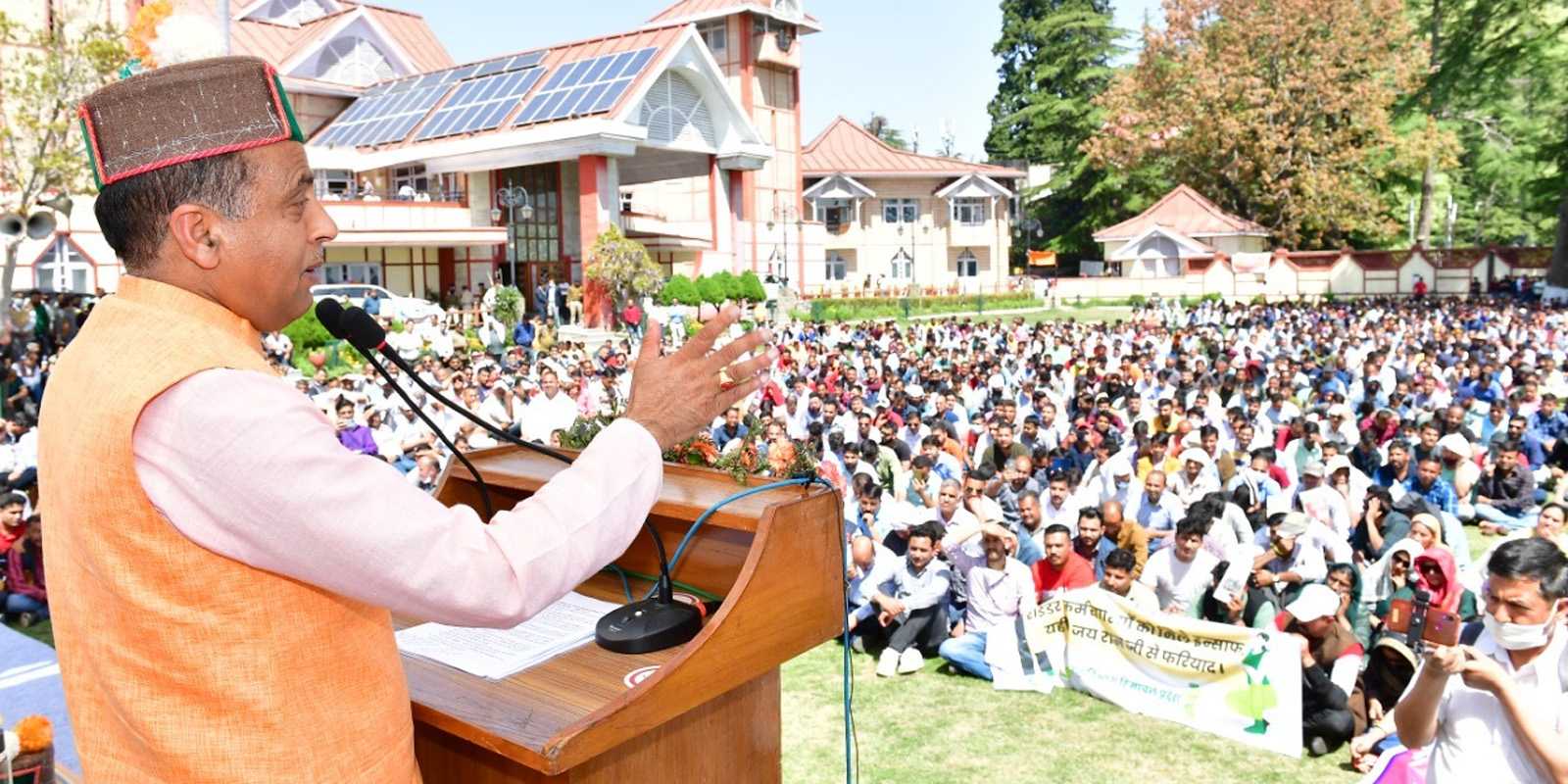
Shimla-Himachal Pradesh Government employees working in different departments before January 3, 2022, would be given a higher scale at par with other employees on completion of two years tenure of regular service. A higher pay scale was also announced for the Junior Office Assistants (IT) on completion of two years of regular service.
Chief Minister Jairam Thakur made these announcements during the Karamchari Maha Sammelan of the Himachal Pradesh Non-Gazetted Employees Federation at the hotel Peterhof on Sunday.
He appreciated the role played by the employee especially frontline workers in the battle against the pandemic.
He said most of the government employees in the state have been given revised pay scales and on average, every employee has got the benefit of a 12 to 15 percent salary hike. There has also been an increase in the pension of about 1.50 lakh pensioners of the state. The financial benefits of Rs. 7801 crore have been given to state government employees and pensioners from the year 2018 to 2022. The pensioners who retired before 2016 are getting the benefit of a 15 to 20 percent increase in the pension while around 40 thousand pensioners who retired after 2016 would be benefitted soon, he said.
He said the daily wages were Rs. 210 in the year 2017 which has been increased by the present state government to Rs. 350. Similarly, 12 per cent interim relief annually has been provided to government employees and pensioners during the present government’s tenure. He said the Himachal government has provided Dearness Allowance to its employees and pensioners on the lines of Punjab and Central governments from the due date. The Punjab government has given only 5 percent interim relief to the employees while the Himachal government has provided 21 percent interim relief to its employees.
“Out of the total interim relief amount given to the employees and pensioners amounting to about Rs. 6500 crore, Rs. 3500 crore has been paid during the tenure of our government” added the Chief Minister.
He said that the state government has increased the government contribution for NPS employees from 10 percent to 14 percent benefitting more than one lakh employees. The NPS employees are being given the benefits of retirement and death gratuity at par with employees falling under the old pension scheme. The government has also increased the upper limit of death gratuity from Rs. 10 lakh to Rs. 20 lakh.
The Chief Minister said the state government has also increased the honorarium of para-workers working in various departments. The salary of outsource workers has been hiked by Rs 1,500 per month.
Non-Gazetted Employees Federation President Ashwani Thakur thanked the Chief Minister for providing various financial and other benefits to different categories of government employees.
Nation
Most Covid Restrictions to be Lifted From March 31, Mask and Hand Hygiene to Continue

New Delhi-The Centre has issued a notification to the States informing that the provisions of the Disaster Management (DM) Act, 2005 will not be invoked in the country after March 31. The Union Health Ministry said that the use of face masks and following hand hygiene will continue.
It implies that most of the Covid-related rules and restrictions would end.
Union Home Secretary Ajay Bhalla issued the notification which said that the decision was taken following the overall improvement in the situation and the preparedness of the government in dealing with the COVID-19 pandemic.
However, local authorities and State police can still invoke fines and criminal cases against persons violating COVID-19 norms under the Indian Penal Code (IPC), a senior government official said.
The DM Act was invoked on March 24, 2020, due to the pandemic
“Over the last seven weeks or so there has been a steep decline in the number of cases. The total caseload in the country stands at 23,913 only and the daily positivity rate has declined to 0.28%. It is also worth mentioning that with the combined efforts, a total of 181.56 Cr vaccine doses have been administered,” the notification said.
“I would like to mention that in view of the nature of the disease, we still need to remain watchful of the situation. Wherever any surge in the number of cases is observed, the States/UTs may consider taking prompt and proactive action at a local level, as advised by MoHFW (Health Ministry) from time to time,” the notification said.
The Indian government had issued various guidelines and measures for the first time on March 24, 2020, under the Disaster Management Act to curb the COVID-19 situation in the country, which have been modified several times thereafter.
India currently has 23,087 active COVID-19 cases and recorded 1,778 new cases and 62 deaths in the last 24 hours. The daily positivity rate has also declined to 0.28%.
News
HP Cabinet Decisions: Country Liquor Made Cheaper in New Excise Policy, Read All Decisions
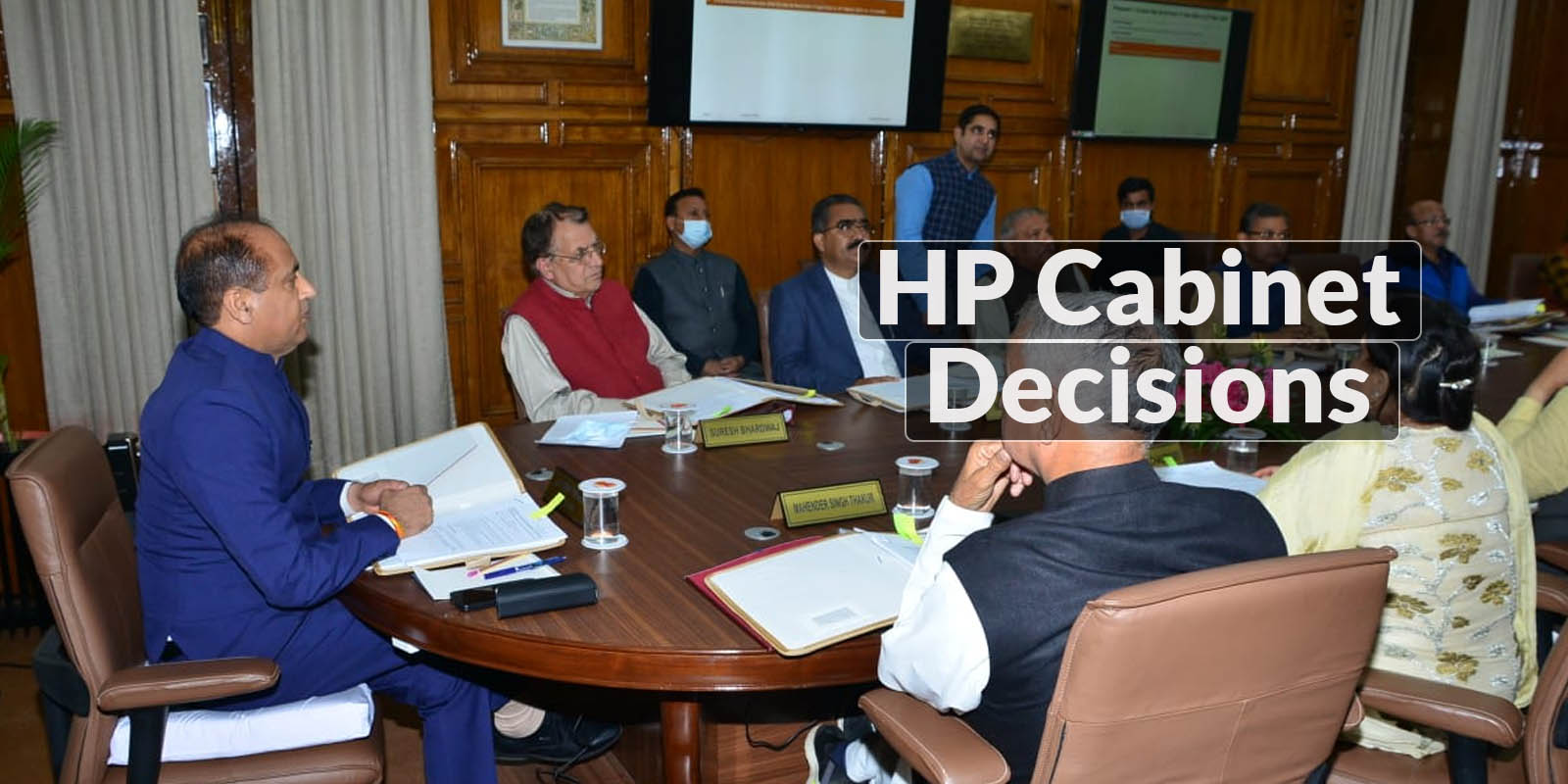
Shimla-A meeting of the Himachal Pradesh Cabinet was held on March 20, 2022, under the chairmanship of Chief Minister Jai Ram Thakur.
The excise policy for the financial year 2022-23 was approved. Approval was also given for the renewal of retail excise vends in the state for the financial year 2022-23 at the renewal fees of 4% of the value of unit/vend.
The State Government said that wants to enhance the government revenue and curb the smuggling of country liquor from the neighbouring states by a reduction in its price.
The brands of Country Liquor will be cheaper as license fees have been reduced. This will help in providing good quality liquor at a cheaper rate to the consumers.
In the new excise policy, the 15% fixed quota of country liquor for manufacturers and bottlers to be supplied to the retail licensees has been abolished. According to the government, this step will give the retail licensees to lift their quota from the suppliers of their choice and further assure the supply of good quality country liquor at competitive prices. The MRP of country liquor will be cheaper by 16% of the existing price.
In this year’s policy, the Gaudhan Vikas Nidhi Fund has been enhanced by Re.1/- from the existing Rs.1.50 to Rs.2.50.
The fixed annual license fee of Bars has been rationalized by abolishing the area-specific slabs of license fee. Now throughout the State, there will be uniform license slabs based upon the room capacity in hotels.
Rates of the annual fixed license fee of Bars in the tribal areas has been reduced considerably.
Further, all the above stakeholders will have to install CCTV cameras at their establishments as it was made mandatory for them.
Wholesale vends and retail vends, the penalty provisions under the H.P. Excise Act, 2011 have been made more stringent.
An end to end online Excise Administration System would be established in Himachal Pradesh, the government said.
HP Government estimates a collection of Rs 2131 crore revenue during the year, which will be Rs. 264 crores higher than the financial year 2021-22 – growth of 14% in state excise revenues.
The Cabinet also gave its nod to amend Himachal Pradesh Disaster Relief Manual-2012 to include deaths due to biting of honey bees, hornet and wasps, accidental drowning and deaths due to accidents of vehicles (including land, water and air) under this Manual.
The Cabinet gave its approval for filling up 11 posts of ‘A’ Class Tehsildar in Revenue Department through direct recruitment on regular basis through Himachal Pradesh Public Service Commission.
HP State Toll Policy 2022-23
The HP Cabinet also gave its nod to HP State Toll Policy for the year 2022-23 which envisages auction cum tender for all the toll barriers in the State. During the year 2021-22, toll revenue has registered a growth of 20 percent of the previous year’s revenue.




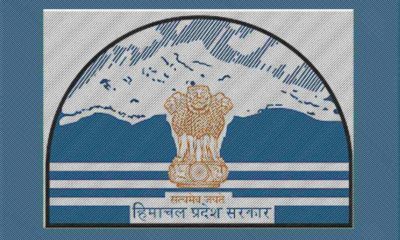

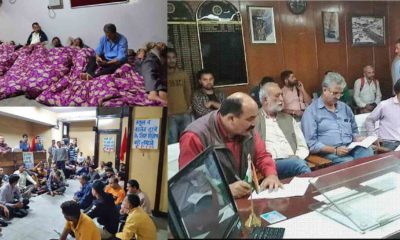







 Home Decor Ideas 2020
Home Decor Ideas 2020
